Disclaimer: Unless otherwise stated, any opinions expressed below belong solely to the author.
As Singaporeans head to the polls on May 3, it will mark the nation’s 14th General Election since independence in 1965—fittingly, in the year Singapore turns 60.
Let’s take a look at how the country has changed over that time, using the most objective method: numbers.
Bigger
The city-state has grown substantially over that time, more than tripling its population from just under 2 million in 1965 to over 6 million today.
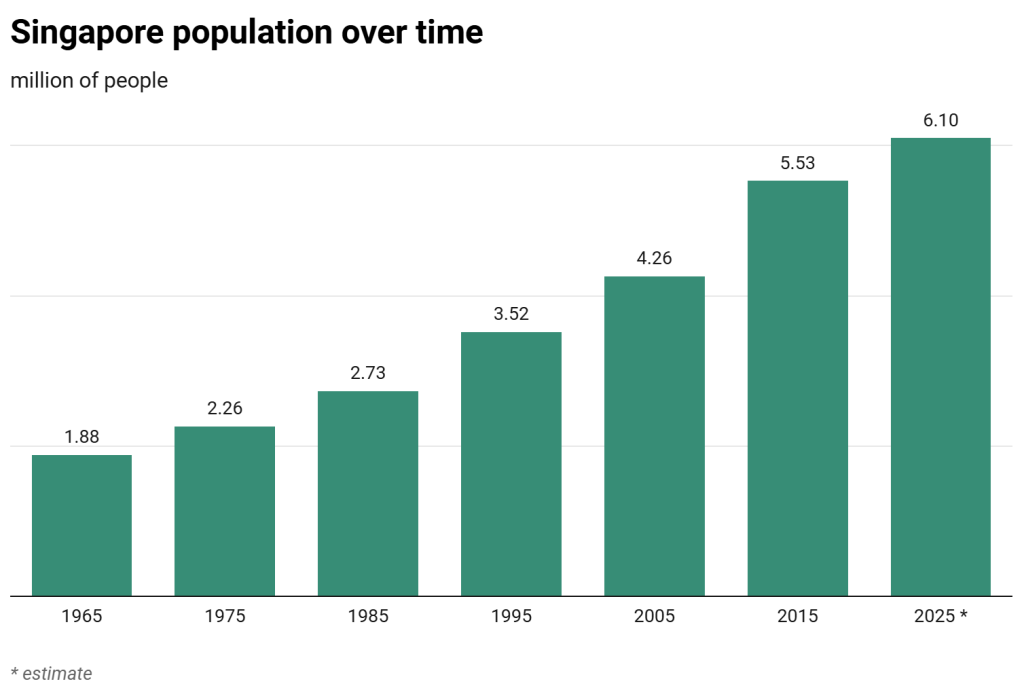
This population growth has spurred the need for major infrastructure upgrades to keep the country moving.
For the first 22 years after independence, buses were the main mode of public transport. But by the late 1980s, they were no longer sufficient.
This led to the launch of the MRT in 1987, starting with just 6 km of track and five stations between Yio Chu Kang and Toa Payoh.
Since then, it has been expanded to over 240 kilometres, becoming national pride and one of the best subway systems on the planet, which the Singapore of today cannot function without.
However, the network is still expanding, with new lines such as the Cross Island Line and Jurong Region Line currently under construction and scheduled to open in the 2030s.
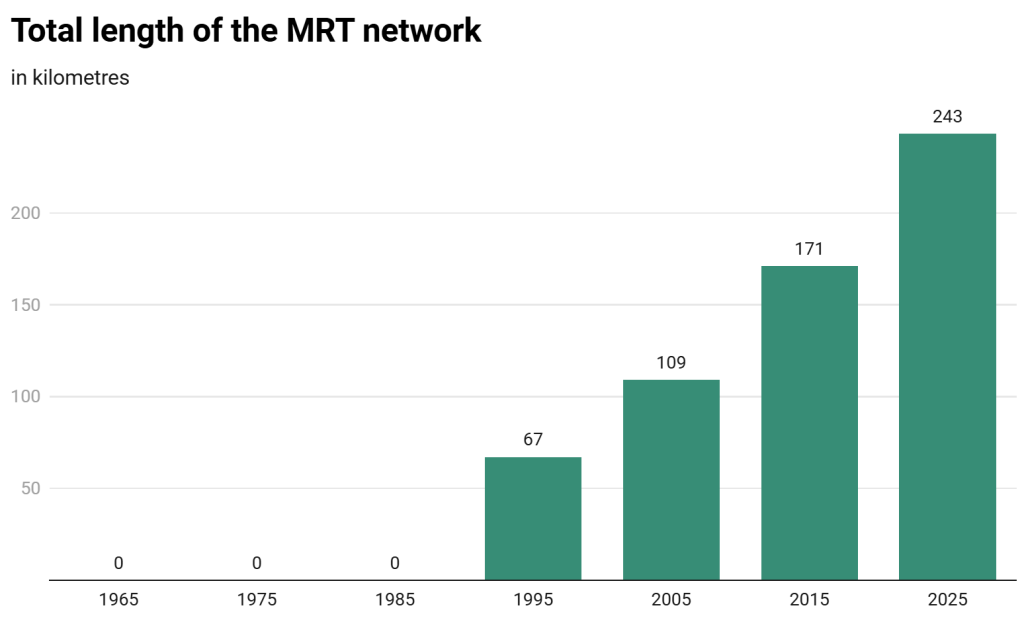
Busier
Together with physical growth, the city has become much busier, as its blossoming coincided with the golden age of 20th-century globalisation.
For more than a century, Singapore has been recognised as a key port on the trading routes between the East and West, linking Asia with Europe and beyond. In 1972, it opened its doors to nascent containerisation, with the construction of its first container terminal in Tanjong Pagar, which was also the only one in Southeast Asia at the time.
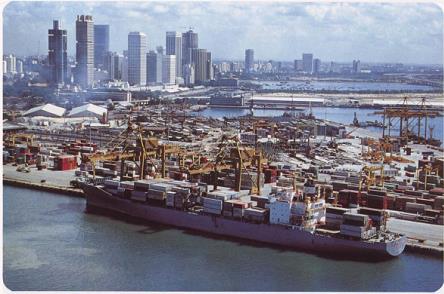
Tanjong Pagar Container Terminal between 1972 and 1983. / Image Credit: National Library Singapore
By 1975, Singapore was still handling just under 100,000 TEU (Twenty-foot Equivalent Unit) per year. However, by the mid-1980s, it broke the one million mark, and by the mid-1990s, it had exceeded 10 million TEU, as it reached the third decade of its existence.
This year, it is expected to exceed 42 million units, making it the second-busiest container port in the world after Shanghai, and the busiest transhipment port of all.
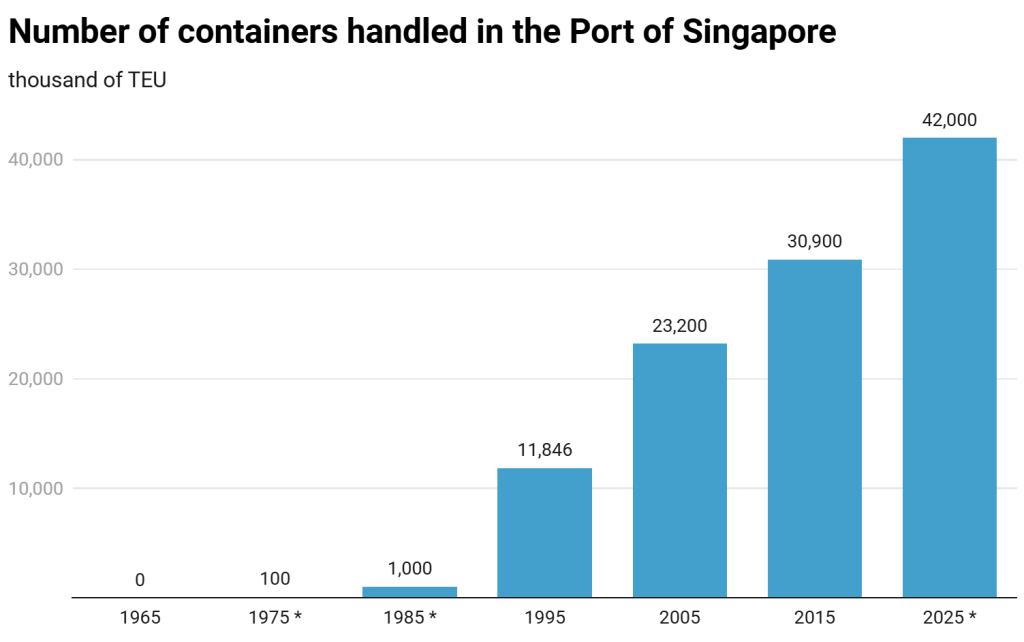
Sea wasn’t the only medium in which Singapore excelled as a hub; with the rise in popularity of air travel and logistics, it has also become one of the most important nodes in the global network.
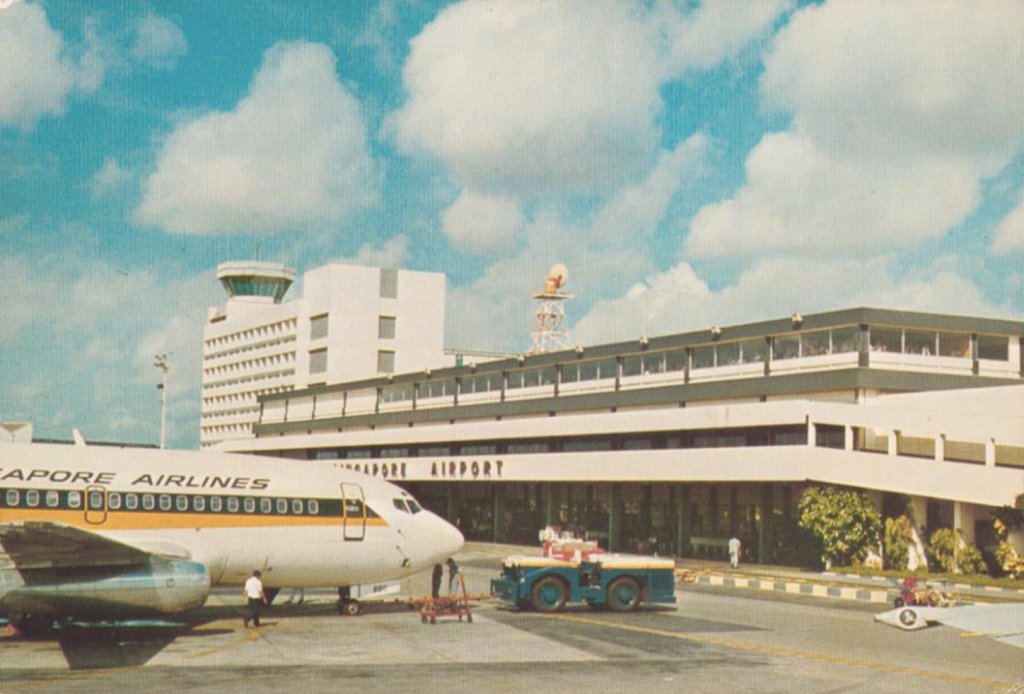 Paya Lebar airport. / Image Credit: National Museum Singapore
Paya Lebar airport. / Image Credit: National Museum SingaporeBy the time of its independence, Singapore had already handled around 1 million passengers, a figure that quadrupled by 1975 and has multiplied manyfold since then.
In 2025, as it enters its sixth decade, Singapore is expected to see 70 million people pass through Changi Airport, which has been named the world’s best airport again this month.
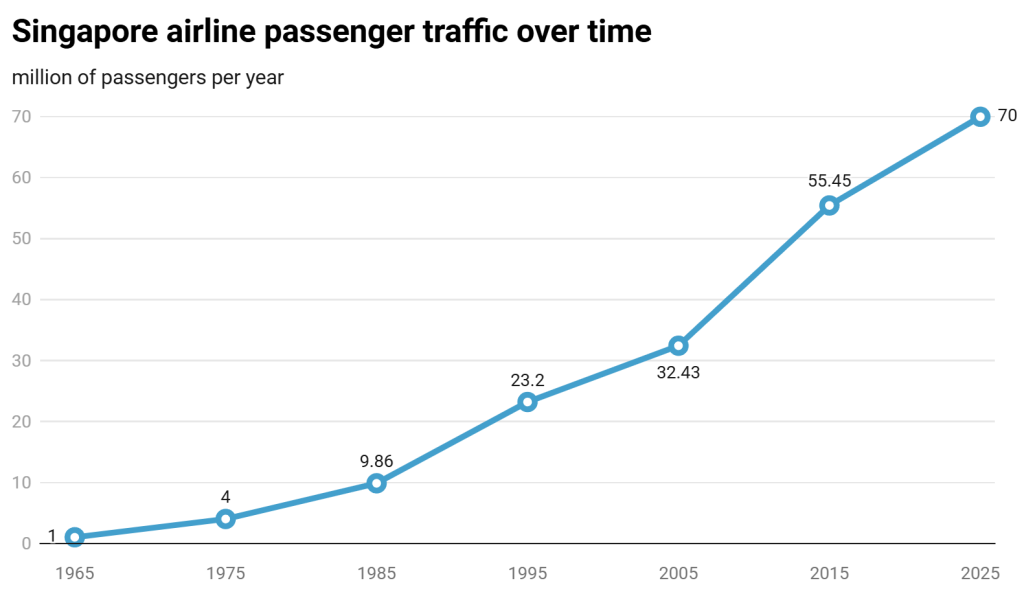
None of this would be possible, of course, were it not for the smart people in charge of the country—and an increasingly more educated and capable population.
Smarter
When Singapore was expelled from the federation with Malaysia, barely anybody had a degree here. And while their share multiplied in subsequent years, it only crossed the 10% threshold in the late 1990s, more than thirty years into the country’s existence.
That said, with modernising society and jobs that require brainpower, not the strength of one’s muscles, almost every young Singaporean pursues higher education these days, while the share of highly educated residents is expected to surpass 40% this year.
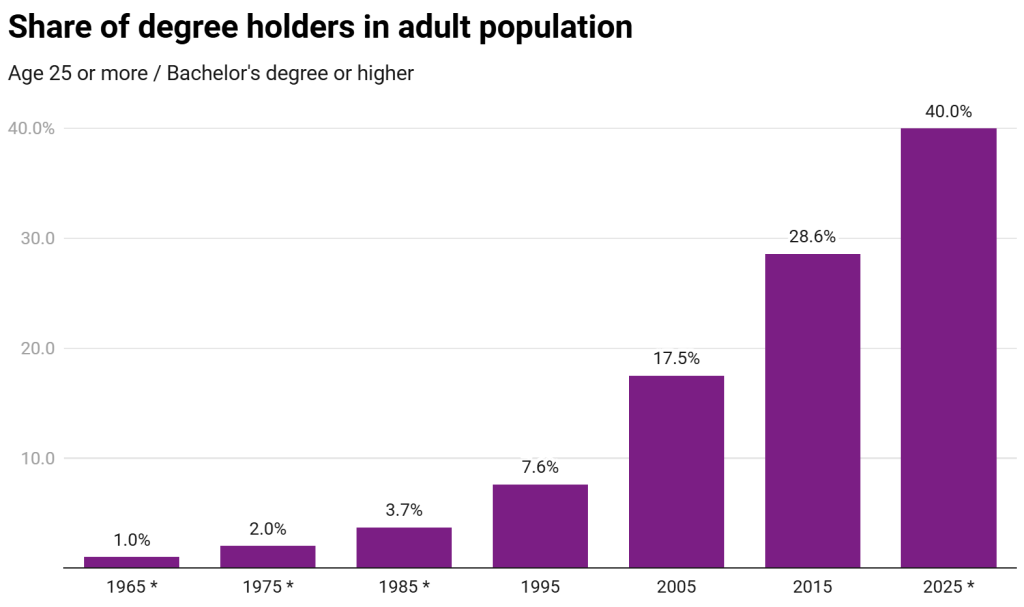
Speaking of jobs, very few locals held more prestigious and better-paid positions within the PMET group—Professionals, Managers, Executives, and Technicians—initially.
In 1965, nine in 10 Singaporeans held modest, manual jobs. But with the rise of globalisation, the nature of work—and the economy—transformed dramatically.

By the late 2000s, over half of Singapore’s local workforce had moved into PMET roles. That share is set to hit nearly two-thirds this year, as fewer Singaporeans take on the jobs their parents once held, many of which are now filled by lower-cost foreign labour.
And speaking of money…
Wealthier
When you combine all of the above, it is no surprise that Singapore’s economic performance has improved with both quantitative and qualitative growth over the years.
Starting at just S$517 per head in 1965, the city-state had quintupled it by 1975 and then multiplied that by 10 in the following two decades.
When it was half its current age, it reached a respectable S$25,000 in Gross Domestic Product per person; however, it then defied the patterns that dictate an increasingly developed country should see its economic output slow down over time.
As of 2025, Singapore is expected to produce close to S$94,000 per person, and surpass the S$100,000 mark in 2027.
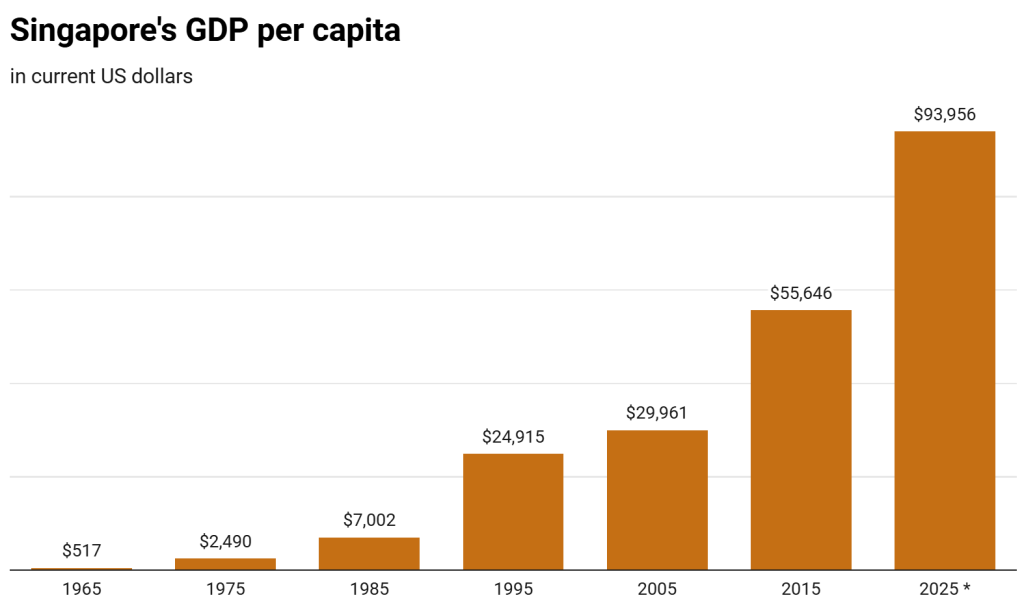
Crucially, this economic growth is reflected in the increased incomes of many Singaporeans, who have seen their earnings multiply over the years.
Domestic median household income from work surpassed S$11,000 last year, having risen from just S$200 in 1965 and from under S$5,000 just twenty years ago.
This is while the Singapore dollar has remained very strong, which is what you can feel anytime you head across the border to Malaysia. Once traded 1:1, the SGD is now worth over three ringgit.
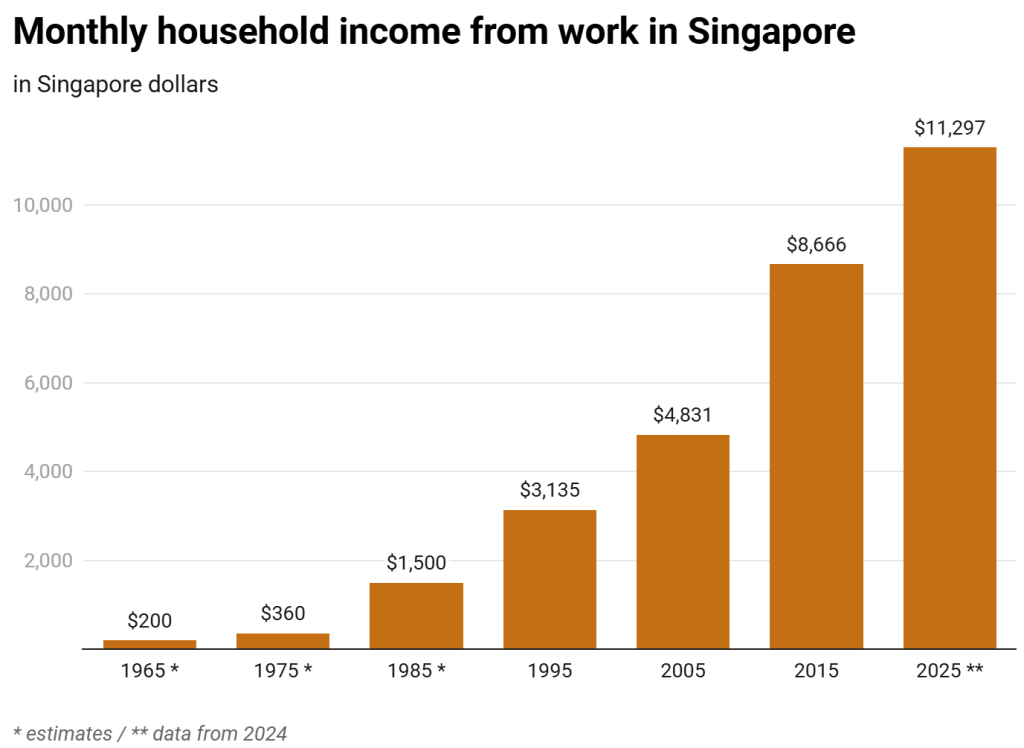
Most importantly, Singapore’s growth is still strong and shows no signs of stagnation, despite the fact that the city-state has fewer competitors left in the global economy.
What began as a small, ex-British colonial port in the Far East, with not a very well-educated population and limited infrastructure, has now evolved into a global success story and one of the most advanced and wealthiest nations on the planet in 2025.
- Read other articles we’ve written on Singapore’s current affairs here.
Featured Image Credit: Richie Chan/ Shutterstock.com

.jpg) 4 hours ago
1
4 hours ago
1
 English (US)
English (US)